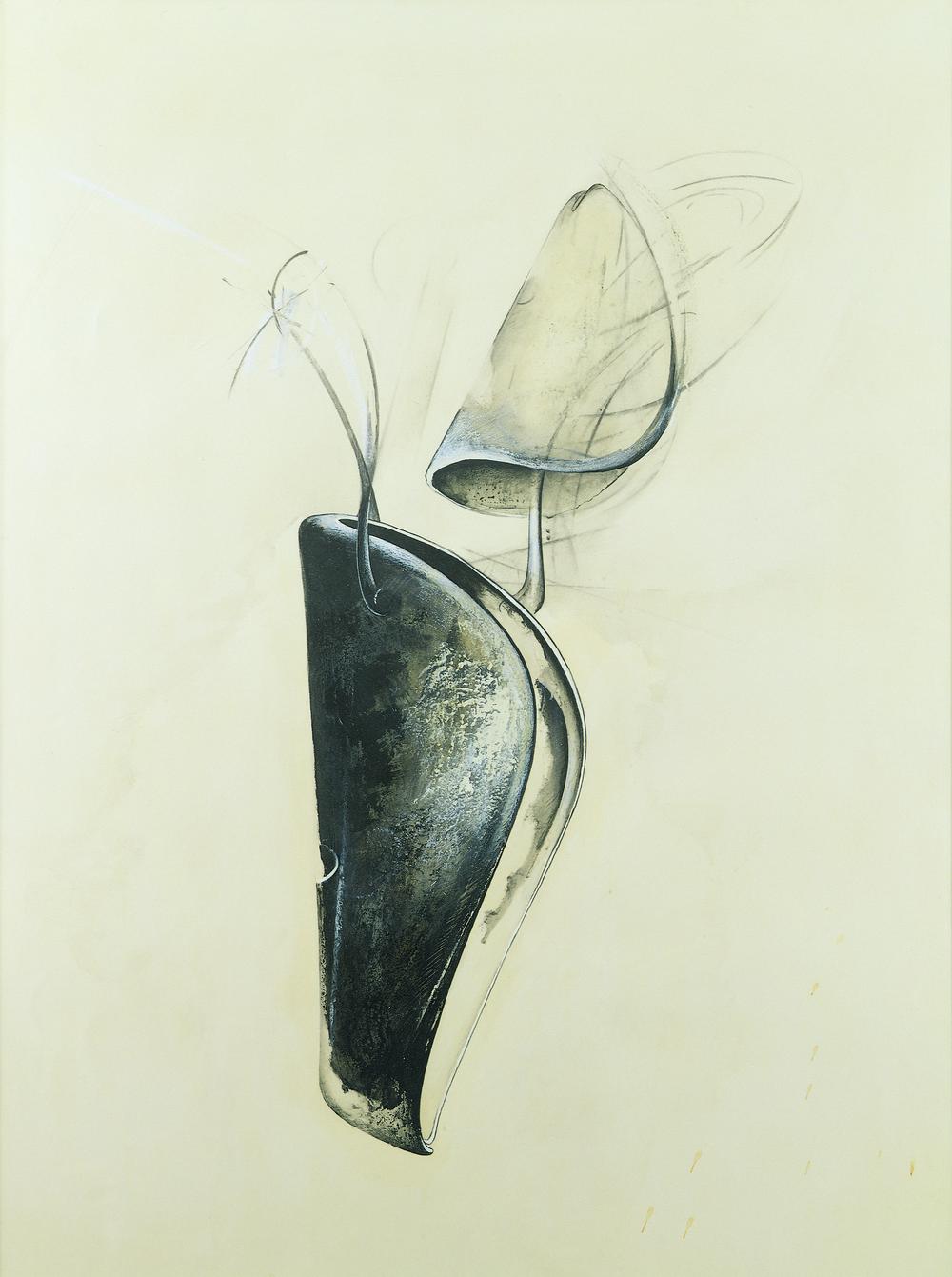Jay DeFeo. Synthetic Muses
Jay DeFeo found inspiration in the sculptural quality of found objects and tools, which often served as models for her paintings and drawings. By fixating on everyday objects—swimming goggles, a dental bridge, a shoe tree—DeFeo transformed them into surrogates for the human body, as in the work on paper Untitled (1977) from her series “Shoe Tree.” A photographic contact sheet from the same year shows the interior of the artist’s studio, where a shoe tree dangles from a twisted wire like a mobile. In her drawing, DeFeo coupled the inanimate and lifelike; hard edges and a cold, gunmetal surface combine with wispy, curvilinear tendrils. As the artist said of her drawings from real-world objects, “even the most literal drawings . . . transcend the definition of the objects from which they are derived. I enjoy the paradox of developing something quite organic while using inorganic models.”1
Jay DeFeo, in Henry Hopkins, untitled essay for Jay DeFeo, Matrix series, no. 11 (Berkeley, CA: University Art Museum, 1978). ↩︎
